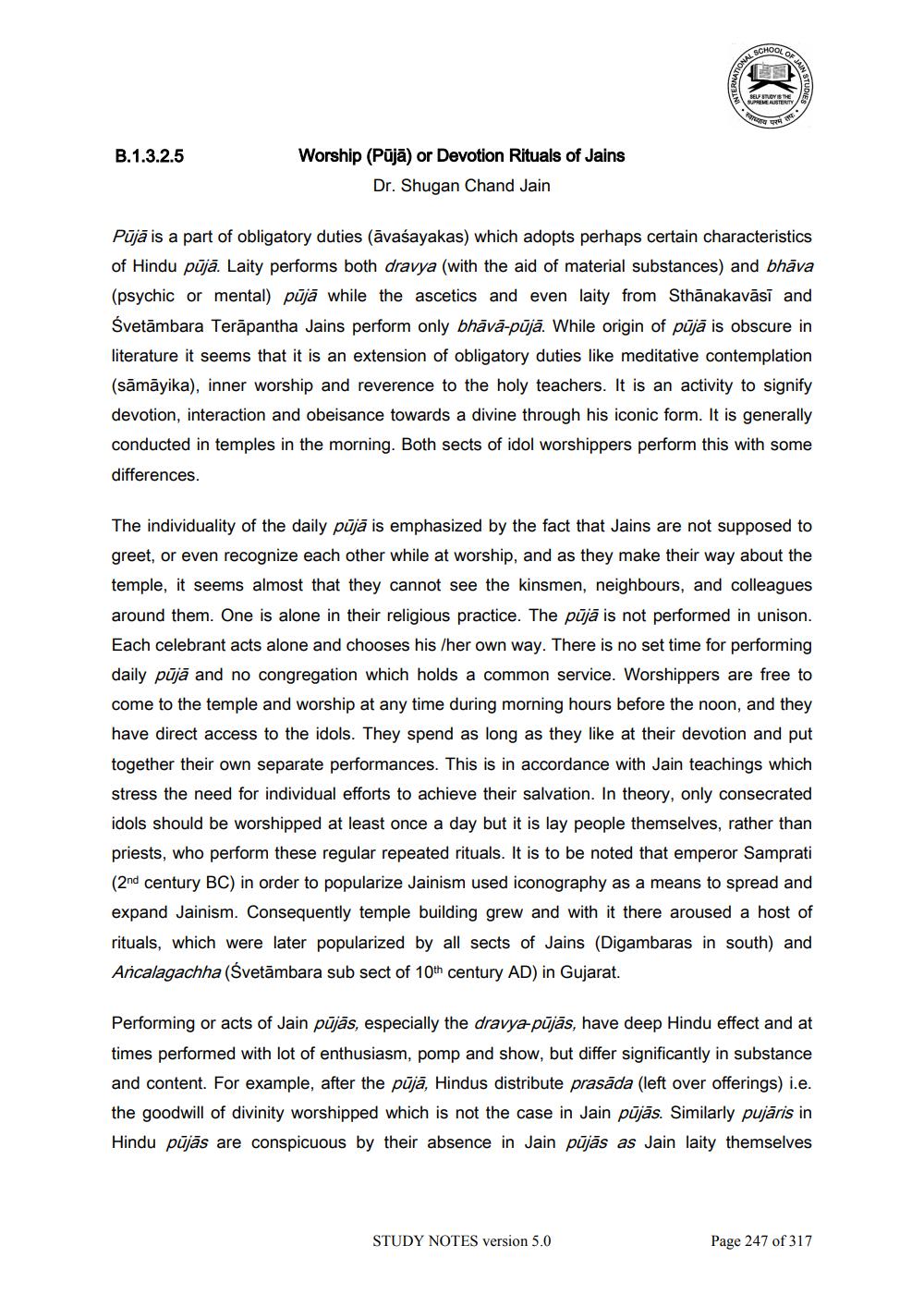________________
B.1.3.2.5
Worship (Pujā) or Devotion Rituals of Jains
Dr. Shugan Chand Jain
Pūjā is a part of obligatory duties (āvaśayakas) which adopts perhaps certain characteristics of Hindu pājā. Laity performs both dravya (with the aid of material substances) and bhāva (psychic or mental) pūjā while the ascetics and even laity from Sthanakavāsi and Śvetāmbara Terāpantha Jains perform only bhāvā pūjā. While origin of pūjā is obscure in literature it seems that it is an extension of obligatory duties like meditative contemplation (sāmāyika), inner worship and reverence to the holy teachers. It is an activity to signify devotion, interaction and obeisance towards a divine through his iconic form. It is generally conducted in temples in the morning. Both sects of idol worshippers perform this with some differences.
The individuality of the daily pūjā is emphasized by the fact that Jains are not supposed to greet, or even recognize each other while at worship, and as they make their way about the temple, it seems almost that they cannot see the kinsmen, neighbours, and colleagues around them. One is alone in their religious practice. The pūjā is not performed in unison. Each celebrant acts alone and chooses his /her own way. There is no set time for performing daily pūjā and no congregation which holds a common service. Worshippers are free to come to the temple and worship at any time during morning hours before the noon, and they have direct access to the idols. They spend as long as they like at their devotion and put together their own separate performances. This is in accordance with Jain teachings which stress the need for individual efforts to achieve their salvation. In theory, only consecrated idols should be worshipped at least once a day but it is lay people themselves, rather than priests, who perform these regular repeated rituals. It is to be noted that emperor Samprati (2nd century BC) in order to popularize Jainism used iconography as a means to spread and expand Jainism. Consequently temple building grew and with it there aroused a host of rituals, which were later popularized by all sects of Jains (Digambaras in south) and Ancalagachha (Svetāmbara sub sect of 10th century AD) in Gujarat.
Performing or acts of Jain pūjās, especially the dravya pūjās, have deep Hindu effect and at times performed with lot of enthusiasm, pomp and show, but differ significantly in substance and content. For example, after the pūjā, Hindus distribute prasāda (left over offerings) i.e. the goodwill of divinity worshipped which is not the case in Jain pūjās. Similarly pujāris in Hindu pūjās are conspicuous by their absence in Jain pūjās as Jain laity themselves
STUDY NOTES version 5.0
Page 247 of 317




